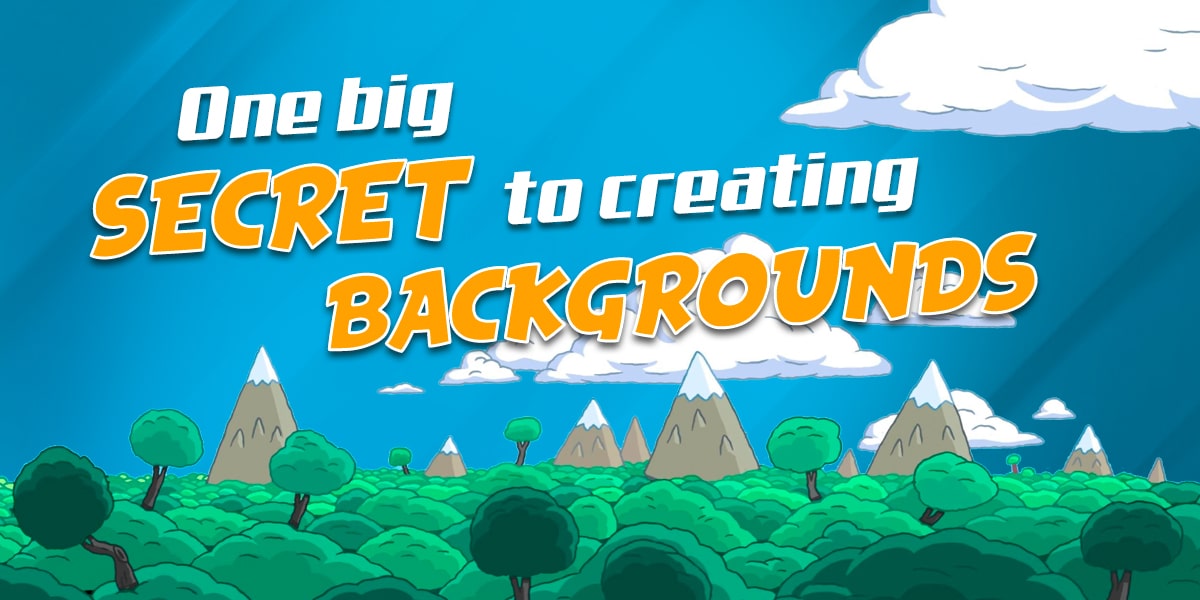A secret for creating impactful backgrounds in illustration
Have you ever felt frustrated when trying to create backgrounds for your illustrations? Do you feel that your characters shine but the settings end up flat and lifeless? Don’t worry, you’re about to discover a secret that will transform your backgrounds and elevate your illustrations to the next level. In this article, we’ll reveal a powerful and easy-to-apply technique that will allow you to create impressive backgrounds that perfectly complement your characters and scenes. Get ready to unlock your creative potential and bring your imaginary worlds to life like never before.
The hidden key: The power of overlapping in backgrounds
When we dive into the fascinating world of illustration, it’s common to encounter a dilemma: how to create backgrounds that not only complement but also enhance our main characters? The answer lies in a seemingly simple, but incredibly powerful concept: overlapping.
Imagine for a moment that you’re observing the world around you. You’ll notice that objects don’t exist in isolation, but overlap each other, creating a sense of depth and realism. This fundamental principle of visual perception is the key to transforming your backgrounds from simple backdrops to integral elements of your visual narrative.
Overlapping not only adds depth to your illustrations but also guides the viewer’s gaze, creating a visual journey that enriches the experience of your work. Want to take your composition skills to the next level? Discover exclusive resources here that will help you master this and other crucial aspects of illustration.
Deciphering the planes: The anatomy of an impactful background
To better understand how to apply overlapping in our backgrounds, it’s essential to familiarize ourselves with the concept of planes. Planes are like invisible layers that structure our illustration, creating a sense of depth and spatial organization.
Let’s imagine a scene of an enchanted forest. In the farthest plane, we might have misty mountains. Moving towards the viewer, we would find tall, leafy trees, followed by shrubs and lower vegetation. In the closest plane, we could place detailed elements like flowers, rocks, or even small magical creatures.
The key lies in how these planes interact with each other. It’s not simply about stacking elements one behind another, but creating a visual dance where each plane subtly intertwines with the others, generating a three-dimensional effect on a two-dimensional canvas.

In this wonderful illustration by Eyvind Earle, we can appreciate how the planes masterfully intertwine. Notice how the castle in the background peeks through the trees in the middle plane, while the dark silhouettes in the foreground frame the scene, creating a sense of depth and mystery. This technique not only adds dimension to the image but also guides our gaze towards the key elements of the composition.
Would you like to perfect your mastery of planes and composition? Click here to access practical exercises that will help you internalize these concepts and apply them in your own creations.
The art of directing the gaze: Strategic spaces in your composition
A crucial aspect in creating impactful backgrounds is the intelligent management of spaces. It’s not just about filling every corner of your illustration, but creating a balance between elements and voids that guides the viewer’s gaze towards the focal points of your work.
Let’s look again at Earle’s illustration. You’ll notice that, despite the richness of details, there’s a clear visual path that leads us from the foreground to the castle in the background. This “path” isn’t explicitly drawn, but created through the strategic arrangement of elements and the spaces between them.
This technique of “letting certain areas breathe” in your illustration not only adds depth but also creates a visual rhythm that makes the viewer’s gaze flow naturally through the scene. It’s like composing a visual symphony, where silences are as important as the notes.

In this scene from “The Triplets of Belleville,” we observe how artist Alexei Nechytaylo has masterfully used overlapping and strategic spaces. The truck in the foreground immediately establishes depth, while the buildings on both sides create a frame that directs our gaze towards the center of the image. The space between the buildings not only adds depth but also creates a dramatic contrast with the city lights, intensifying the atmosphere of the scene.
Eager to master the art of composition? Explore exclusive resources here that will help you create captivating and lively scenes in your illustrations.
Beyond the obvious: Backgrounds that tell stories
A well-executed background is not just a backdrop for your characters; it’s an integral part of the visual narrative. Every element you include, every detail you elaborate, has the potential to enrich the story you’re telling.
Consider, for example, an urban background. The worn buildings, the neon signs, the busy or deserted streets, all contribute to creating a specific atmosphere and telling a silent but powerful story about the world in which your characters exist.

In this animation background, we see how the repetition of elements (in this case, the trees) can create a sense of depth and movement. The trees in the foreground are larger and more detailed, while those in the background become smaller and more diffuse, creating an illusion of distance. The mountains on the horizon and the clouds distributed across different planes add even more dimension to the scene.
This type of background is ideal for scenes of movement or for establishing a specific environment. The arrangement of elements subtly guides the viewer’s gaze, creating a visual journey that can be used to emphasize action or movement in an animation.
Ready to take your backgrounds to the next level? Enter here and discover advanced techniques to create environments that not only complement but also enrich your visual narratives.
The path to extraordinary backgrounds: A step-by-step guide
Now that we’ve explored the fundamental principles, it’s time to get to work. Here’s a step-by-step guide to creating impactful backgrounds:
- Initial sketch: Start with a quick and loose sketch. Don’t worry about details at this stage; the important thing is to capture the essence of your idea.
- Identify the main focus: Decide where you want the viewer to center their attention. It can be a character, an object, or an element of the landscape.
- Establish the planes: Divide your scene into planes (foreground, middle ground, background). Use soft lines to mark these divisions.
- Play with composition: Experiment with different arrangements of elements. Don’t be afraid to make several quick sketches to explore options.
- Apply overlapping: Make sure elements in different planes overlap naturally, creating depth.
- Create contrast: Use variations in size, detail, and tonal value to differentiate planes and guide the gaze.
- Refine the details: Once satisfied with the overall composition, start adding details, beginning with the most important elements.
- Review the lines: Ensure that lines of different elements don’t unintentionally align, which could create visual confusion.
- Add atmosphere: Use effects of light, shadow, and color to create a coherent atmosphere throughout the scene.
- Evaluate and adjust: Step back from your work and evaluate it with a critical eye. Don’t hesitate to make adjustments to improve composition and visual impact.
Remember, practice makes perfect. Each background you create will bring you closer to mastering this art. Want to accelerate your progress? Explore resources designed to enhance your skills here and take your backgrounds to the next level.
Elevating your art: Beyond the fundamentals
Mastering background creation is a continuous journey of learning and experimentation. As you become familiar with the basic principles, you can begin to explore more advanced techniques and personal styles.
Consider experimenting with different media and techniques. For example, the use of textures can add a completely new dimension to your backgrounds. Play with light and shadow to create dramatic atmospheres. Don’t fear mixing realistic styles with more stylized or abstract elements if it serves your creative vision.
Also remember that backgrounds don’t have to be static. In comics and animation, backgrounds can evolve and change to reflect the development of the story or the emotional state of the characters.
The key is to always maintain an open and curious mind. Observe the world around you with an artist’s eyes. Analyze how other illustrators and artists approach their backgrounds. Each observation, each experiment, will bring you closer to developing your own unique and memorable style.
Conclusion: Your journey towards extraordinary backgrounds begins now
Creating impactful backgrounds is an art in itself, a skill that can elevate your illustrations from good to extraordinary. With the principles we’ve explored – overlapping, handling of planes, strategic composition, and visual narrative – you have the necessary tools to start transforming your backgrounds.
Remember, each illustration is an opportunity to learn and improve. Don’t be afraid to experiment, make mistakes, and discover new ways to express your artistic vision. Backgrounds are not just a complement; they are an integral part of your visual story, capable of transporting the viewer to completely new worlds.
Now it’s your turn to put this knowledge into practice. Take your preferred drawing tool and start exploring the infinite possibilities that open up before you. Ready to take the next step in your artistic journey? Discover exclusive resources here that will help you perfect your skills and create backgrounds that not only complement your illustrations but elevate them to new heights.
The world is waiting to see the wonders you can create. It’s time to bring your backgrounds to life and, with them, unforgettable stories!



